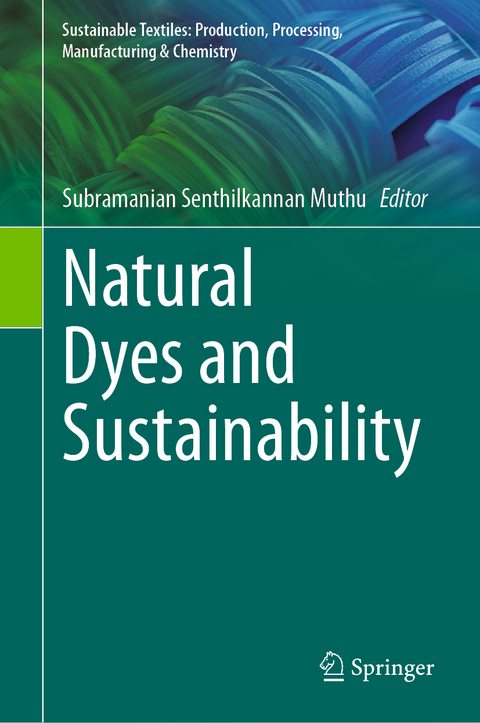
Natural Dyes and Sustainability
Springer International Publishing (Verlag)
978-3-031-47470-5 (ISBN)
Natural dyes offer a time-tested and generally more sustainable alternative to synthetic dyes in the textile industry. The issues surrounding synthetic dyes are well-known, and in the literature it is generally accepted that natural dyes have a smaller environmental impact. However, even natural dyes have issues that must be dealt with in order to ensure sustainability in the industry. For example, the mordants needed to improve the dyeing process may release hazardous heavy metal pollutants when used. This book is dedicated to exploring cases such as this that illustrate the benefits and drawbacks to natural dyes and steps that must be taken for their sustainable use in the textile industry.
Dr. Subramanian Senthilkannan Muthu is currently the Chief Sustainability Officer at Green Story Inc, Canada, based out of Hong Kong. He earned his PhD from The Hong Kong Polytechnic University, and is a renowned expert in the areas of Environmental Sustainability in Textiles & Clothing Supply Chain, Product Life Cycle Assessment (LCA) and Product Carbon Footprint Assessment (PCF) in various industrial sectors. He has five years of industrial experience in textile manufacturing, research and development and textile testing and over a decade's of experience in life cycle assessment (LCA), carbon and ecological footprints assessment of various consumer products. He has published more than 100 research publications, written numerous book chapters and authored/edited over 150 books in the areas of Carbon Footprint, Recycling, Environmental Assessment, Life Cycle Assessment and Environmental Sustainability.
Chapter 1. Natural dyes in Traditional textiles - A gateway to sustainability.- Chapter 2. SUSTAINABLE EXTRACTIONS AND APPLICATIONS OF NATURAL DYESTUFFS.- Chapter 3. Dyes and pigments from agricultural wastes in the coloration of textiles.- Chapter 4. Recent approaches and advancements in natural dyes.- Chapter 5. Mushroom based natural dyes for sustainable color in textiles.- Chapter 6. Extraction and Application of Tannin Based Plants As Source Of Natural Colourants.- Chapter 7. SOCIAL AND ENVIRONMENTAL IMPACT OF NATURAL DYEING.- Chapter 8. Classification of Natural Dyes for Sustainable Exploitation.- Chapter 9. Natural Indigo dyes - A potential dye for sustainability.- Chapter 10. NATURAL DYES - COLOURING TOOL FOR TEXTILES.- Chapter 11. Extraction of Natural Pigments Using Supercritical Carbon Dioxide and its Application on Different Fabrics.- Chapter 12. Natural Dyes as Corrosion Inhibitors.- Chapter 13. Evaluation of Colorimetric and Color Fastness Properties of Marble PrintedSilk Fabrics with the Usage of Various Mordants and After Treatments.- Chapter 14. Natural dyeing of PA 6, PTT, PBT, PLA, Silk, and Soybean textile fibers with black mulberry fruit extract by conventional and microwave dyeing techniques.
| Erscheinungsdatum | 25.01.2024 |
|---|---|
| Reihe/Serie | Sustainable Textiles: Production, Processing, Manufacturing & Chemistry |
| Zusatzinfo | VIII, 354 p. 182 illus., 98 illus. in color. |
| Verlagsort | Cham |
| Sprache | englisch |
| Maße | 155 x 235 mm |
| Gewicht | 777 g |
| Themenwelt | Naturwissenschaften ► Biologie ► Ökologie / Naturschutz |
| Naturwissenschaften ► Geowissenschaften | |
| Sozialwissenschaften ► Politik / Verwaltung | |
| Schlagworte | Dye extraction • Indigo dyes • Social and environmental impacts • Tannin-based dyes • Textile sustainability • Traditional textiles |
| ISBN-10 | 3-031-47470-8 / 3031474708 |
| ISBN-13 | 978-3-031-47470-5 / 9783031474705 |
| Zustand | Neuware |
| Haben Sie eine Frage zum Produkt? |
aus dem Bereich


